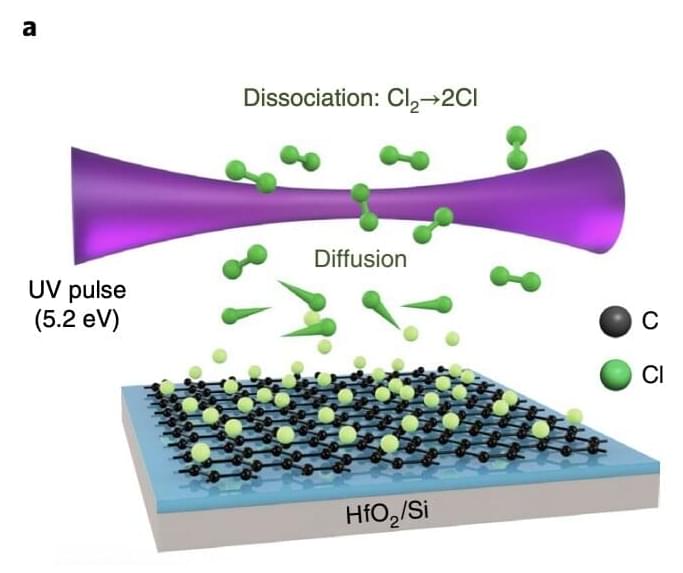In recent years, electronics and chemical engineers have devised different chemical doping techniques to control the sign and concentration of charge carriers in different material samples. Chemical doping methods essentially entail introducing impurities into materials or substances to change their electrical properties.
These promising methods have been successfully applied on several materials including van der Waals (vdW) materials. VdW materials are structures characterized by strongly bonded 2D layers, which are bound in the third dimension through weaker dispersion forces.
Researchers at University of California, Berkeley (UC Berkeley), the Kavli Energy Nanosciences Institute, Beijing Institute of Technology, Shenzhen University, Tsinghua University recently introduced a new tunable and reversible approach to chemically dope graphene. Their approach, introduced in a paper published in Nature Electronics, is based on laser-assisted chlorination.
